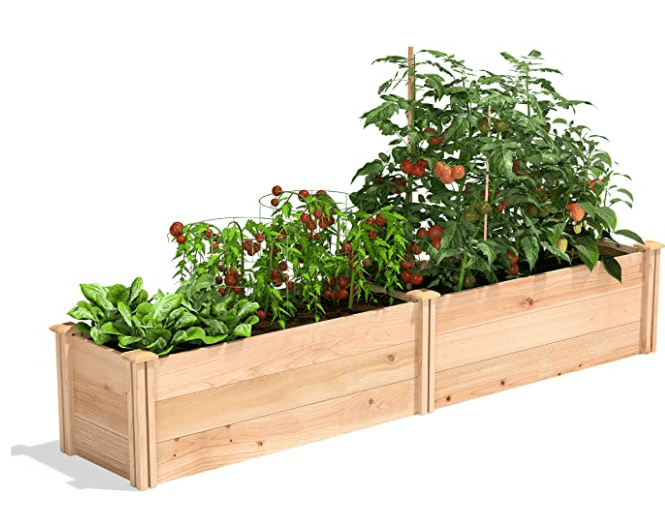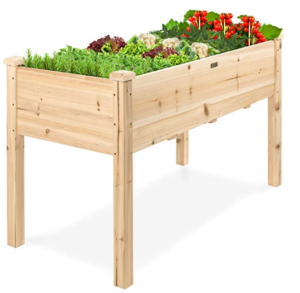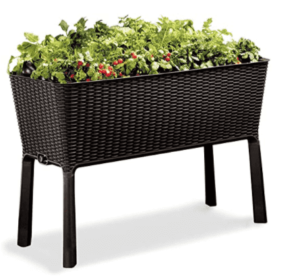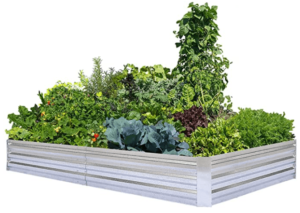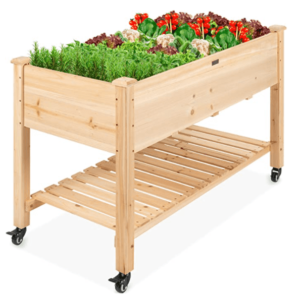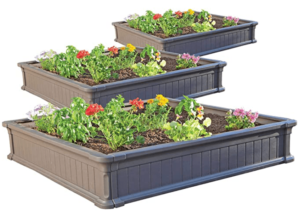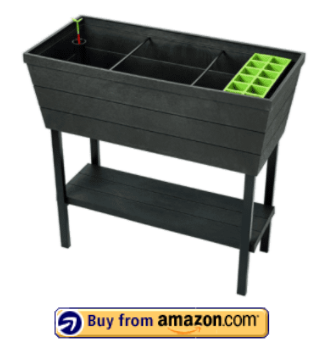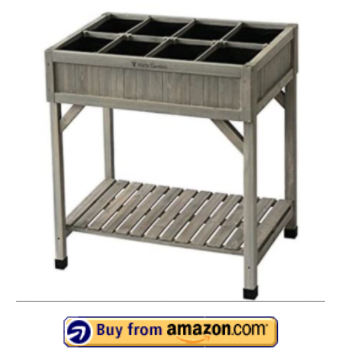5 Necessary Steps on How to Build A Raised Garden Bed
Building a raised garden bed is relatively cheap and easy to manage. The countless benefits raised garden bed offer cannot be overlooked. The simple wooden container raised above the ground and filled with quality soil is used for planting vegetables. Gardening activities become more manageable and comfortable. There is minimal bending and kneeling while tending your garden. The soil inside the raised frame allows deeper rooting and enhanced drainage, which will eventually improve productivity. Also, having a raised garden bed is advantageous in that there are fewer weeds and pests.
Table of Contents
10 Best Raised Garden Beds In The Market
Select the Right Wood
Among other materials that can be used to build raised gardens, wood is the most popular because it is inexpensive and readily available. Affordability and availability of the materials are very crucial for gardeners who wish to make plant boxes. In choosing the best wood to use for your raised garden bed, durability, and rot-resistance of the type of wood should be prioritized. Also, avoid painted wood since some paints are poisonous and can lead to adverse health impacts. . However, pressure-treated lumber has a blend of chemicals that prevents moist soil from causing rot. Although it is recommended for organic gardening, some growers consider other eco-friendly options.
Cedar is a known expensive type of wood with natural oils as a preventive mechanism against rotting, making them more durable. Remember, choosing over 2-inch-thick wood would make the raised garden bed last longer for about ten years. Options used in place of timber include concrete bricks, but be ready to occasionally change the soil since the concrete will make the soil pH increase.
Determine the Size of Your Raised Bed
You would need to have your raised bed at a place that receives adequate sunlight, about 6 to 8 hours each day. However, it will be challenging to construct the structure on uneven ground; you need to get a level base for easy construction. The common and standard width of a raised garden bed is 4 feet, so that you can attend every part of the garden without stepping on it. If you make the bed too wide, you will have challenges to access the middle from the sides; thus, making weeding and harvesting difficult. The garden bed’s length depends on the requirements and size of your gardening place, as long as you can access the entire garden.
You can make a long raised bed, then divide it into portions for different crops. The depth of raised bed must have a minimum of 6 inches of soil since many garden plants have a root depth of 6 to 12 inches, but maximum depth varies.
Preparing the Site for Raised Bed
Before establishing your garden bed, use a garden fork to break and loosen the soil on the ground to ensure it is not compact; fork the soil to 6 to 8 inches. In some cases, gardeners remove a spade depth topsoil, and dig the next layer, then return the removed topsoil to blend the layers to improve plant rooting. In case you want to set up your raised bed at a place that has a lawn, it is advisable to use a cardboard or plastic to cover the yard for some time and start preparing when the grasses are dead and quick to remove.
Construct the Bed
Use strong wooden at every corner to support the timber bed, and if your bed is more extended, place stakes after every few feet to make it firm. Drive the stakes into the surface, leaving about 40 percent aboveground. Make sure the stakes are at level height to avoid having an uneven bed. The lowest wooden boards should have some inches below the surface and ensure they are level. Then use galvanized nails to reinforce the wood to the support stakes. You can fix additional rows of timber above the lower boards, and ensuring there is little space between subsequent rows.
Determine the Appropriate Soil and Fill Your Raised Structure
The essential ingredient in the raised garden bed is a mixture of soil. It is the main factor causing many gardens; poor soils cannot yield as per your expectations. The soils should be able to offer plants various kinds of nutrients; therefore, fill your bed with a blend of topsoil, compost manure, and different organic substances that can decompose to increase soil fertility. Ensure to water your bed quite often so that it does not run dry; also, use a mulch to ensure soils in the raised bed retain moisture.
In conclusion, raised garden beds present an opportunity for people whose gardens have poor soils. The benefits arising from this gardening mechanism are exceptional, enhanced productivity, fewer weeds, easy to weed and harvest, and many more. Constructing the raised structure is simple and cheap. Through the above steps, you can easily create your raised garden bed.

